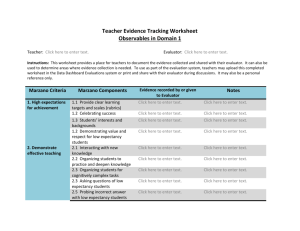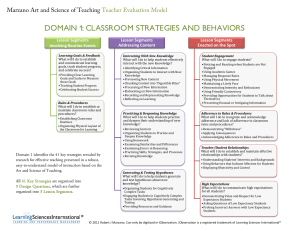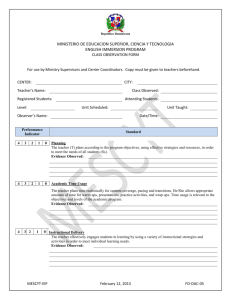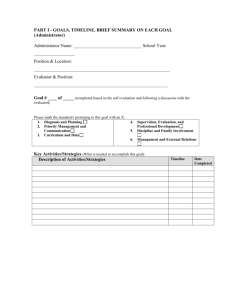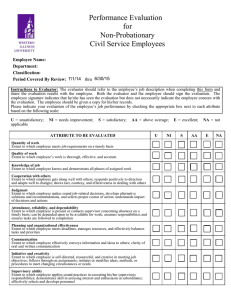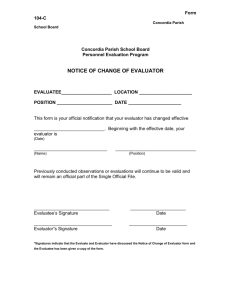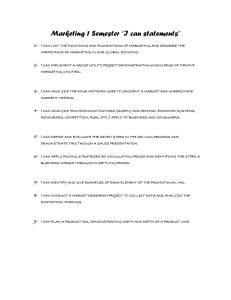OBSERVATION - Ephrata School District
advertisement
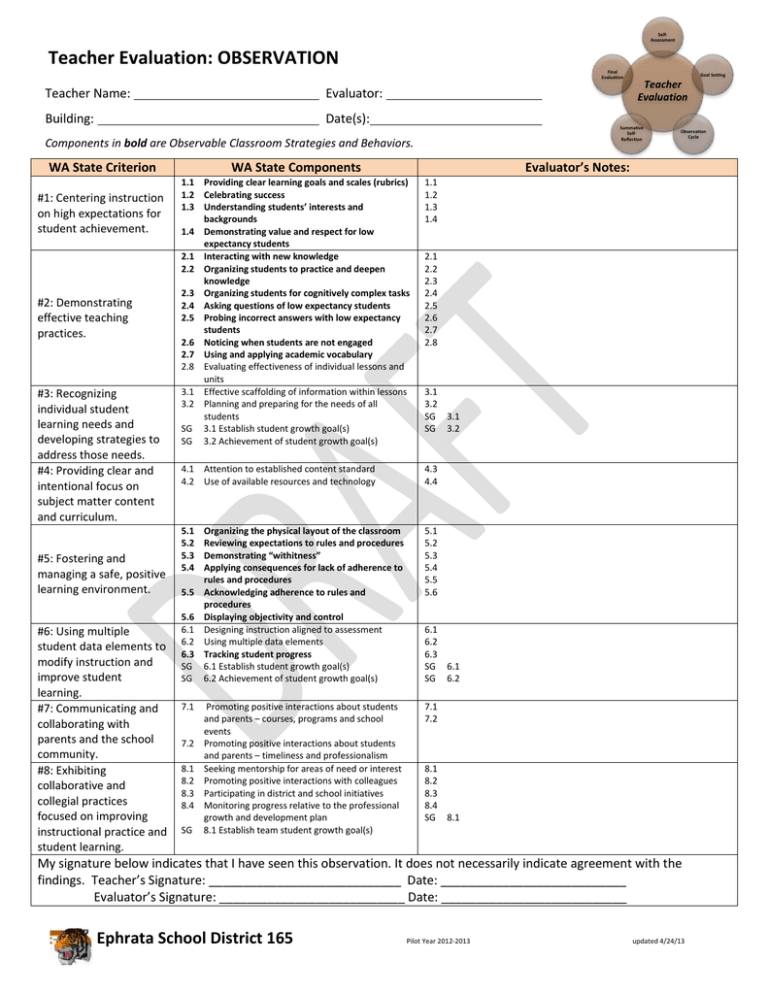
SelfAssessment Teacher Evaluation: OBSERVATION Final Evaluation Teacher Name: Evaluator: Building: Date(s): Summative SelfReflection Components in bold are Observable Classroom Strategies and Behaviors. WA State Criterion #1: Centering instruction on high expectations for student achievement. #2: Demonstrating effective teaching practices. #3: Recognizing individual student learning needs and developing strategies to address those needs. #4: Providing clear and intentional focus on subject matter content and curriculum. #5: Fostering and managing a safe, positive learning environment. #6: Using multiple student data elements to modify instruction and improve student learning. #7: Communicating and collaborating with parents and the school community. #8: Exhibiting collaborative and collegial practices focused on improving instructional practice and student learning. WA State Components 1.1 1.2 1.3 1.4 4.1 Attention to established content standard 4.2 Use of available resources and technology 4.3 4.4 5.1 5.2 5.3 5.4 Organizing the physical layout of the classroom Reviewing expectations to rules and procedures Demonstrating “withitness” Applying consequences for lack of adherence to rules and procedures Acknowledging adherence to rules and procedures Displaying objectivity and control Designing instruction aligned to assessment Using multiple data elements Tracking student progress 6.1 Establish student growth goal(s) 6.2 Achievement of student growth goal(s) 5.1 5.2 5.3 5.4 5.5 5.6 Promoting positive interactions about students and parents – courses, programs and school events Promoting positive interactions about students and parents – timeliness and professionalism Seeking mentorship for areas of need or interest Promoting positive interactions with colleagues Participating in district and school initiatives Monitoring progress relative to the professional growth and development plan 8.1 Establish team student growth goal(s) 7.1 7.2 5.6 6.1 6.2 6.3 SG SG 7.1 7.2 8.1 8.2 8.3 8.4 SG Observation Cycle Evaluator’s Notes: 1.1 Providing clear learning goals and scales (rubrics) 1.2 Celebrating success 1.3 Understanding students’ interests and backgrounds 1.4 Demonstrating value and respect for low expectancy students 2.1 Interacting with new knowledge 2.2 Organizing students to practice and deepen knowledge 2.3 Organizing students for cognitively complex tasks 2.4 Asking questions of low expectancy students 2.5 Probing incorrect answers with low expectancy students 2.6 Noticing when students are not engaged 2.7 Using and applying academic vocabulary 2.8 Evaluating effectiveness of individual lessons and units 3.1 Effective scaffolding of information within lessons 3.2 Planning and preparing for the needs of all students SG 3.1 Establish student growth goal(s) SG 3.2 Achievement of student growth goal(s) 5.5 Goal Setting Teacher Evaluation 2.1 2.2 2.3 2.4 2.5 2.6 2.7 2.8 3.1 3.2 SG 3.1 SG 3.2 6.1 6.2 6.3 SG 6.1 SG 6.2 8.1 8.2 8.3 8.4 SG 8.1 My signature below indicates that I have seen this observation. It does not necessarily indicate agreement with the findings. Teacher’s Signature: ____________________________ Date: ___________________________ Evaluator’s Signature: ___________________________ Date: ___________________________ Ephrata School District 165 Pilot Year 2012-2013 updated 4/24/13
